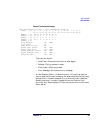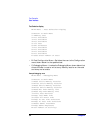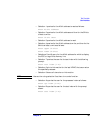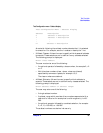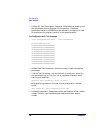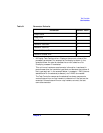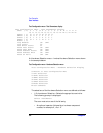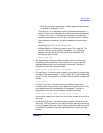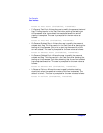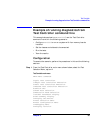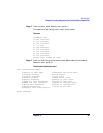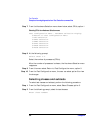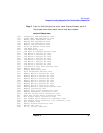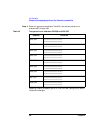
Chapter 4 91
Test Controller
User interface
• Multiple hardware component numbers separated by commas
or spaces, for example 1,+2,-3.
The format 2, or +2, denotes to use this hardware component in
testing. The format -2 denotes not to use this hardware component
in testing. The 1 and +1 formats are equivalent, and leaving a
hardware component out of the list is equivalent to the -n format.
As an example, to select all the even processors the user would
enter:
0,2,4,6,8,a,c,e, 10, 12, 14, 16, 18, 1a, 1c, 1e
• 6=Node Selection—Allows the user to enter 7-bit node ids. The
format is similar to that used for processors, i.e. an optional
operator can be used and multiple entries are allowed. The
following prompt is used:
Enter Node Ids:
• B=Loop Enable—Allows the user to modify the value of the loop
enable flag, which causes the Test Controller utility to loop on all
selected subtests when the last subtest is executed. The user is
prompted for the new value as follows:
Loop Enable (0=disabled, 1=enabled):
• C=Loop Count—Allows the user to specify the number of times to loop
through the selected subtests. It is only used if the “Loop Enable” flag
is set. The user is prompted for the new value (a decimal number) as
follows:
Loop Count:
• D=Test Error Count—Allows the user to modify the maximum
number of test errors that can occur before the Test Controller utility
terminates execution of subtests on this processor. The user is
prompted for the new value (a decimal number) as follows:
Test Error Count value (1-127, N=no limit):
A value of N means that there is no limit to the number of errors that
can occur.
• E=Pause at Test Start—Allows the user to modify the pause at test
start flag. This flag results in the Test Controller pausing the testing
on this processor just prior to starting the process of determining the
first subtest to execute. The user is prompted for the new value as
follows:



